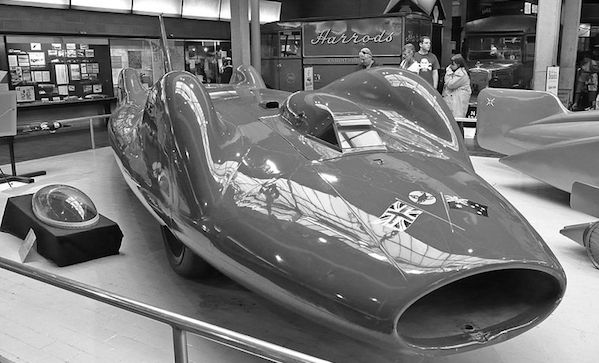“Record breaking is like revolution. Success is its only excuse and failure diminishes everyone in contact with it.”
With these words begins John Pearson’s classic Bluebird and the Dead Lake, a chronicle of Donald Campbell’s 1964 attempt to capture the world land speed record in the Bluebird, his car built for the purpose, at Lake Eyre, a forsaken salt flat in South Australia.
We mostly only hear about record-breaking once the record is broken and the record breaker is a hero; everything before that, however, belongs to the category of ambitions unfulfilled, or, less charitably, failure. Bluebird and the Dead Lake is that kind of story—of before the record is broken, of a man living in the shadow of his daredevil father, and of the people around him who believe in his dream until the odds stack up and failure looks inevitable.
The astonishing thing about the book, published a year after the attempt, is that fifty years have not diminished it, and consequently Donald Campbell’s record attempt is every bit as tense and thrilling as something happening right now. A few pages in, and it’s 1964 again.
Of course, Pearson’s close reporting is aided by the fact that Campbell’s record attempt was dogged by a dizzying number of setbacks. He was still recovering from his crash at Bonneville, and in seeking an alternative venue, staked his hopes on Lake Eyre, which nearly proved his undoing. Beset by freak rainstorms, the record team spent considerable time and energy battling the salt flat: staking out a long-enough track that dodged salt hillocks, avoiding places where the salt is too thin and risked braking under the weight of the Bluebird, patching grooves cut in the salt by the Bluebird, and scraping the surface of the flats smooth. Meanwhile, money was running low, sponsors were getting nervous, the press was withering it their criticism, and members of his own team thought that Campbell had lost his nerve. Increasingly, it looked as though the record was unlikely to be broken, and the man seemed obsessed and delusional. As Pearson puts it, “I did not want to see Campbell destroy himself . . . And during the last few days the car seemed to have grown out of hand, to have turned into a monstrous presence on its dead lake, a sort of minotaur waiting for its sacrifices and bringing out the selfishness and the fear and the bitterness of everyone who believed in it.”
Bluebird and Dead Lake, first published in 1965, is being republished under the aegis of Aurum Press. They’re republishing a number of classic sports titles, such as How We Beat the All Blacks, by John Reason, and The Football Man, by Arthur Hopcraft, with more to come in the new year.
Dave Robson is the editor of DailyXY. He spends his time reading books, drinking Scotch, and smoking cigars.


